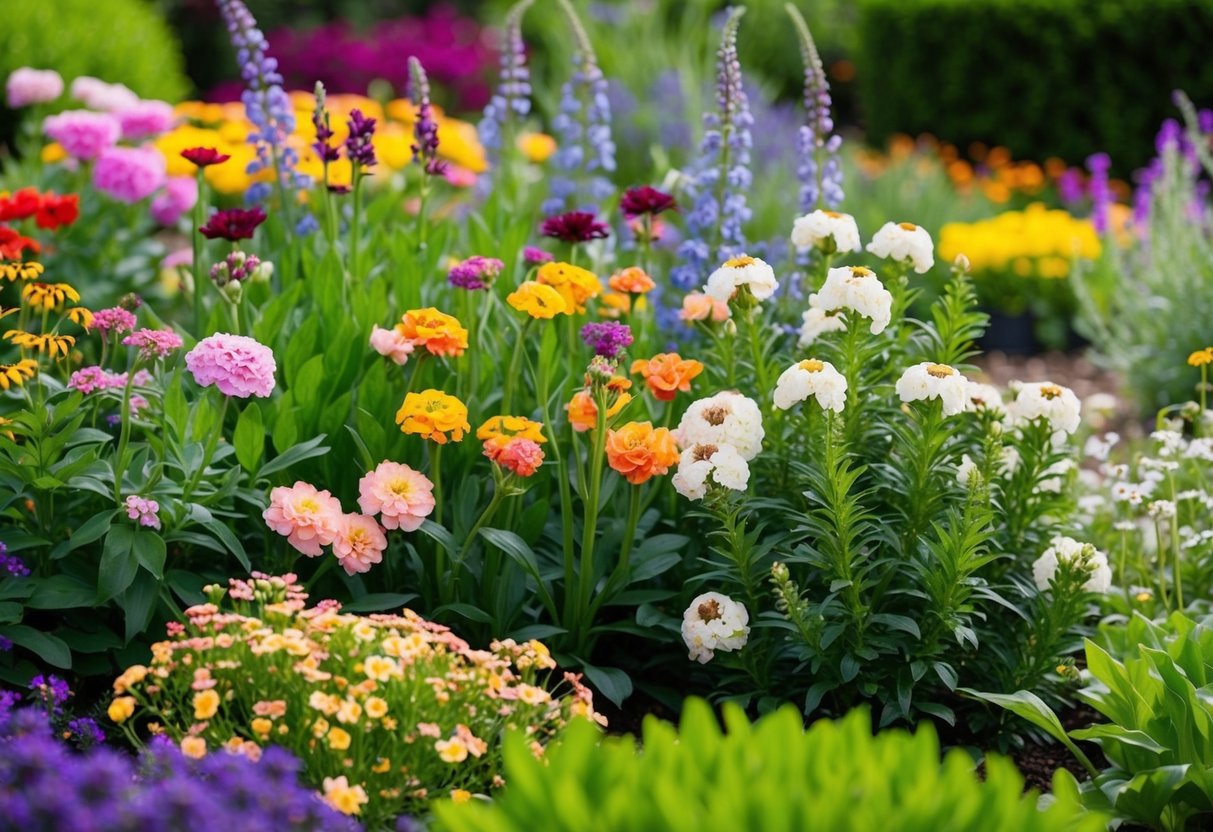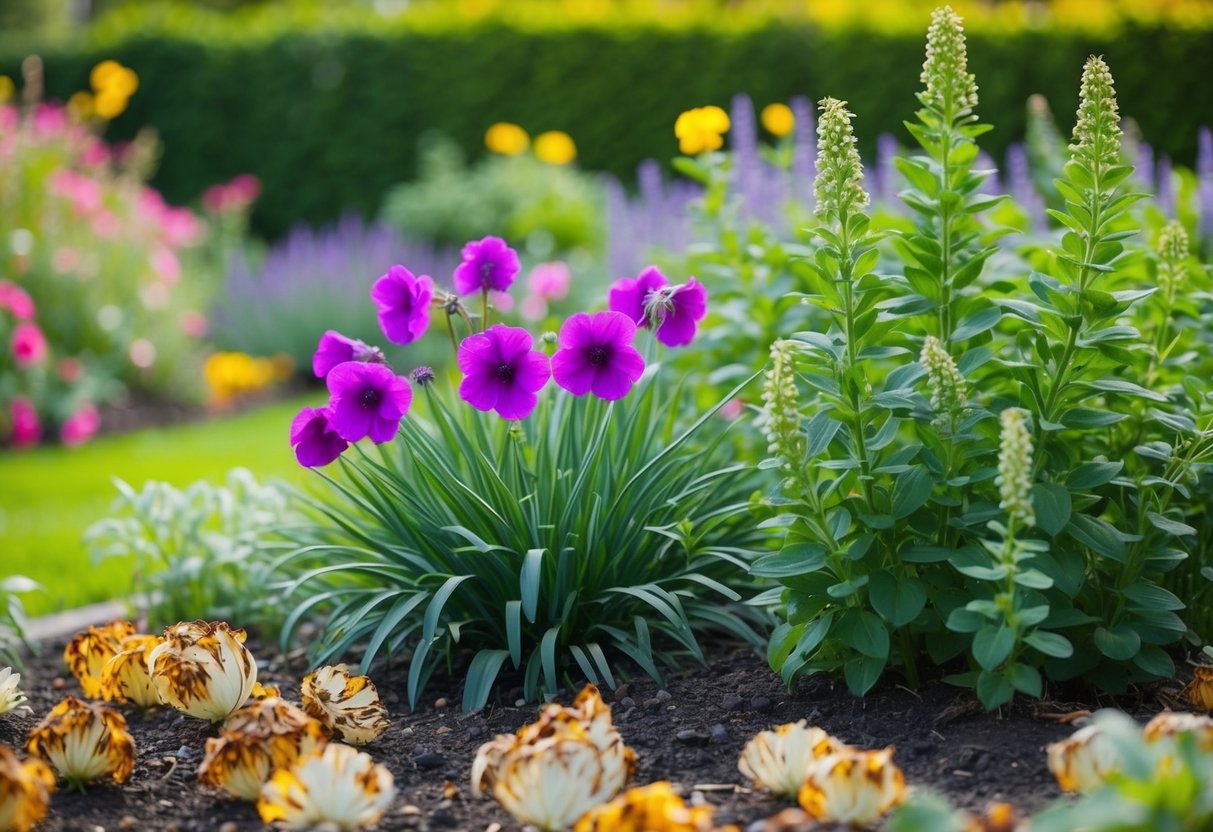Do Hardy Perennials Come Back Every Year? A Gardener’s Guide
Perennials are a gardener’s best friend because they can fill your garden with color and life year after year, often needing less maintenance than annuals. You may wonder, do hardy perennials come back every year? The answer is pretty simple. Yes, most hardy perennials do come back each year, even in harsh climates. This quality makes them a popular choice for gardens everywhere.

Imagine planting once and enjoying blossoms for many seasons. Hardy perennials like peonies and coneflowers can withstand cold winters and provide resilient blooms that liven up your outdoor space. The key is choosing the right plants for your climate and garden conditions. You might want flowers that not only endure but also thrive, adding bursts of color whether the summers are blazing or the winters are freezing.
Exploring different hardy perennials opens up endless possibilities for your garden. Each plant brings its own charm, size, and color that can fit various garden styles. You can create a breathtaking display that lasts through the changing seasons. With a bit of planning and the right choice, your garden can bloom with beauty year after year.
Understanding Perennials

Perennials are plants that return each year, providing a reliable source of color in your garden. In this section, you’ll learn about hardy perennials and how their lifespan differs from other plants.
Defining Hardy Perennials
Hardy perennials are plants that survive through winter and come back every year. These plants can handle harsh conditions and often thrive in cold climates. They are well-suited for gardens because they adapt well to varying conditions, including different soil types and amounts of sunlight.
Some common hardy perennials include coneflowers, daylilies, and peonies. These plants are not only cold-hardy, surviving freezing winters, but they are often drought-tolerant as well. This means they require less watering once established, making them low-maintenance choices for your garden.
Perennial Lifespan
While perennials return yearly, their longevity can vary. Some can live for many years, creating robust clumps, while others may decline after a few years. For instance, chrysanthemums may need replacement over time to keep your garden vibrant.
Understanding their growth patterns helps manage your garden. Dividing perennials, such as those that form large clumps, every few years encourages continued bloom. This process not only rejuvenates plants but also offers an opportunity to expand your garden by planting divisions elsewhere.
Ensuring the right growing conditions also contributes to a longer lifespan. Providing well-drained soil and the right amount of sunlight helps keep them healthy year after year.
Selecting the Right Perennials for Your Garden

Choosing perennials that suit your garden’s needs can be an enjoyable process. You’ll want to consider both the beauty and practical concerns like maintenance. Popular hardy perennials offer vibrant flowers and require less effort to grow. Meanwhile, you should also factor in your local climate and the garden’s conditions under Considerations for Planting.
Popular Hardy Perennials
If you’re looking for vibrant colors and hardiness, consider adding lilies and irises to your garden. These plants are known for their striking blooms and durability.
Daylilies and coneflowers are other standout choices, known for their ability to thrive in various conditions. They bring flashes of color without much fuss.
Peonies are a classic choice for their lush, fragrant flowers. Their long lifespan makes them a staple in many gardens.
Hostas, with their broad and lush leaves, are excellent for shady areas and require minimal care.
These selections provide a range of colors, heights, and textures, making it fun to create a diverse and appealing garden.
Considerations for Planting
When selecting perennials, think about your garden’s specific conditions. Check the sunlight and shade balance, as some plants thrive in sunny spots while others prefer the shade.
Your garden’s soil type also matters. Well-drained soil suits most perennials, but some varieties like hostas can tolerate different soil conditions.
Consider the local climate. Hardy perennials like peonies and coneflowers can withstand cold winters, while others might need more mild conditions.
Low-maintenance plants are ideal if you want a beautiful garden without spending too much time on upkeep. Choose wisely to ensure the perennials you pick will flourish year after year.
Perennial Care and Maintenance

Caring for perennial flowers involves regular tasks to ensure they thrive. Proper watering, feeding, pruning, and deadheading can help your garden bloom beautifully with plants like echinacea, phlox, and salvia.
Watering and Feeding
Perennial flowers need consistent moisture, especially during dry spells. For drought-tolerant varieties like echinacea and salvia, ensure the soil dries out slightly between waterings. Deep watering helps roots grow strong.
Feed your plants with a balanced fertilizer in early spring. This boosts growth and blooming. Use compost as an alternative to chemical fertilizers for more organic gardening. Apply a thin layer around the base of the plant, taking care not to cover the stems.
Pruning and Deadheading
Pruning keeps your perennials tidy and encourages new growth. In early spring, cut back dead stems before new shoots appear.
Deadheading, or removing spent flowers, encourages more blooms. For perennials like phlox and salvia, regularly pinching off old blooms ensures continuous flowering.
Be gentle during this process to avoid damaging new growth. Proper pruning also maintains the shape of your plants, adding to your landscaping beauty. Performing these simple tasks helps your garden stay vibrant and healthy.
Designing with Perennials

Using perennials in your garden involves playing with layers, textures, and colors. Different blooming seasons also help create a vibrant landscape throughout the year.
Layering and Texture
When designing with perennials, think about the height and texture of each plant. Taller plants like asters and shasta daisies can be placed at the back or center, while shorter plants like yarrow or low-growing ground covers can be in the front. This approach creates a layered effect that adds depth to your garden.
Textures play a key role in enhancing the garden’s visual appeal. Pair the feathery foliage of plants like ferns with broad-leafed greenery for contrast. Mixing textures keeps your landscape lively and engaging.
Color Schemes and Blooming Seasons
Color is another powerful tool in garden design. Select perennials like peonies for their lush pink blooms or daylilies for their cheerful yellows. Consider how these colors will interact throughout the year. Choosing plants with staggered blooming seasons ensures that your garden remains colorful year-round.
For a cohesive look, select a color scheme such as monochromatic shades or a complementary palette. Full-sun perennials that thrive in sunny spots can add vibrant pops of color, while those suited for shadier areas offer softer tones. This strategic planting not only elevates visual interest but also encourages biodiversity.
Common Pitfalls and Solutions

Ensuring your hardy perennials thrive requires attention to both pest and disease management and preparation for winter. These steps will help keep your garden vibrant and healthy.
Pest and Disease Management
Dealing with pests and diseases can be challenging in maintaining a beautiful garden. Many perennials are susceptible to insects like aphids and diseases such as powdery mildew. You should monitor your plants for any early signs of problems and try companion planting to naturally ward off pests. For example, planting marigolds near your perennials can deter harmful insects.
Using organic insecticidal soap or neem oil can control minor infestations. It’s essential not to overwater to prevent fungal issues. Properly spacing your plants will also enhance air circulation, reducing disease risks. By keeping these pests and diseases in check, your garden will continue to flourish.
Winterizing Your Perennials
Preparing your perennials for winter is key to their survival. Cold hardy perennials can endure chilly temperatures, but they still benefit from some protection. Mulching is a simple yet effective way to insulate the roots. Spread a layer of mulch around 2 to 3 inches thick over the soil once the ground starts to freeze.
You should also cut back dead stems and leaves to prevent rot and disease over the cold months. Covering your plants with burlap or frost cloth can shield them from harsh winter elements. Remember, not all perennials need deep winterization, so focus on the cold-sensitive varieties to ensure they return vibrant and robust in the spring.







